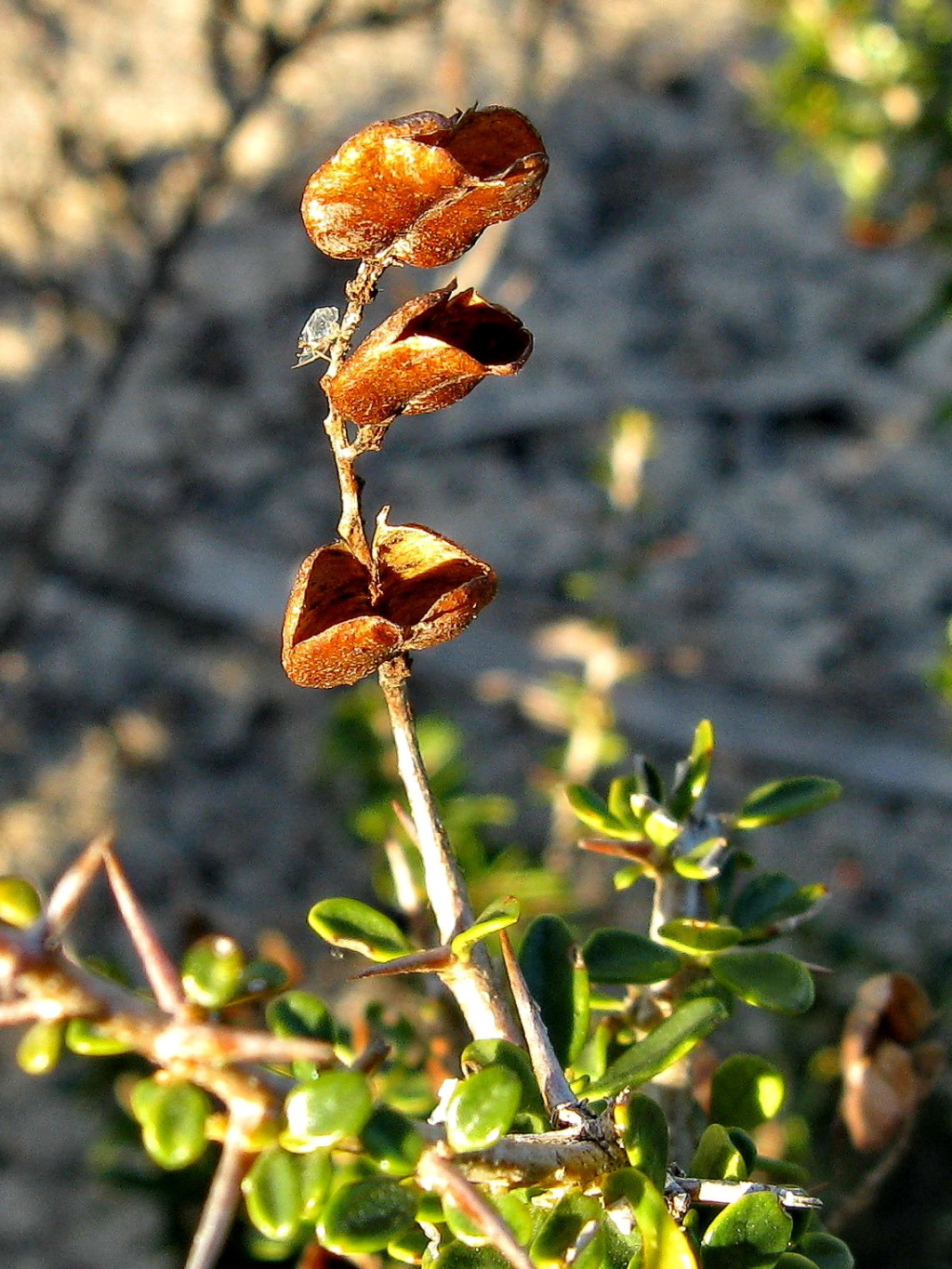Bursaria spinosa subsp. spinosa
Low shrub to a tree up to c. 8 m high; branches (at least of juvenile plants) commonly armed with slender spines c. 1 cm long. Leaves alternate (those subtending spines often clustered), linear, narrowly ovate, elliptic, or obovate, entire or shallowly toothed, often shallowly emarginate, glabrous. Inflorescence a more or less pyramidal panicle usually c. 5–12 cm long and wide; flowers white or cream; sepals ovate or triangular, 0.5–1 mm long, caducous; petals oblong to narrowly obovate, c. 5–8 mm long; stamens subequal to petals; ovary plus style shortly exceeded by stamens. Capsule broadly obovate or obcordate, 4–8 mm long, 5–10 mm wide, brown, glabrous; seeds reniform, brown, flat, c. 3–4 mm long. Flowers Oct.–Jan.
LoM, MuM, Wim, GleP, Brid, VVP, VRiv, RobP, MuF, GipP, OtP, WaP, Gold, CVU, GGr, DunT, NIS, EGL, EGU, WPro, HSF, HNF, OtR, Strz, MonT, HFE, VAlp. Also SA, Qld, NSW, Tas. Except for far north-west, heavier soils of the Wimmera, Riverina, Volcanic Plain, and higher mountain ranges, widespread and common almost throughout the State.
The immense variability of habit and leaf size, shape etc. demonstrated by this subspecies appears to be more or less continuous, and due more to environmental influences and age of the plant than the existence of distinct entities. Young plants and those from drier sites tend to be spinescent and small-leaved, while mature plants from well-watered areas (coasts, river valleys, fertile plains) tend to be large-leaved, virtually spineless and are often arborescent.
 Spinning
Spinning


